As the popularity of tenkara grows, tweaks and innovation are becoming the rule rather the exception. One area that has seen a good deal of change is the type of line being used.
If you are new to tenkara, the line is a key component in the setup. Like other forms of fly-fishing the line both loads the rod and delivers the fly but is not stored on a reel. It is a fixed length attached to the rod tip.
When I started with tenkara the line choices were pretty basic. You had a choice of furled lines or level lines. Today there are a variety of line options with more on the horizon. For example small diameter fly lines have recently become popular.
All are readily available and have their proponents, as you will see below.
Level Lines
Level lines are a single diameter of line. Materials are usually nylon, monofilament or fluorocarbon. Level line users pick a diameter to suit the fishing they are doing and the fly they are casting. Benefits include economy, the ability to adjust length easily and delicate presentations. A key component in selecting level lines is visibility. Clear lines are hard to see and regular level line users opt for bright, florescent colors like orange, pink or green.
Rob Worthing of Tenkara Guides LLC offered some important observations about picking level lines. “Level lines that are created specifically with fixed line fly-fishing in mind are 100 percent fluorocarbon, and are formulated to be stiff with little memory. The stiffness is important in holding the line off the water and keeping a direct connection to your fly.”
Because fluorocarbon is dense it has some key advantages according to Worthing.“The density improves casting. The low surface area to weight ratio is also why it excels in sinking flies. It is less apt to get pushed around by varying currents at different depths, allowing you to establish a more direct connection with your fly.”
Fishing with denser level lines also allows you to use a lighter line, which contributes to a key tenkara advantage; the ability to keep line off the water.
Chris Stewart of Tenkara Bum agrees with the advantage of a lighter line. “Even though heavier lines are easier to cast, they are harder to catch fish with. You can’t hold them off the water as well, so you can’t get the same drifts that you can get with lighter lines. Also, lighter lines have less inertia, so they are more sensitive, it takes less to make them twitch.”
Furled Lines
Often furled lines are the first line new tenkara users try. Furled lines are multiple
strands of material that taper from thick to thin. They are similar to furled leaders used in other forms of fly-fishing but are usually longer. 11 feet to 13 feet are common and longer lengths are available. Most are made with Kevlar to reduce the “stretchiness” that comes from nylon or monofilament.
Customization is quite common in the furled line arena. Do it yourself furling jigs and videos are available for those who want a try building a line and personalize their rig. Kevin Kelleher’s book, Tenkara, Radically Simple, Ultralight Fly Fishing, has a chapter about making your own lines.
Two companies stand out in the furled line market, Moonlit Fly Fishing and Streamside Furled Leaders. Both offer a wide selection of lengths and designs.
Many people, myself included, like the “feel” of a furled line when casting. This often helps people make the transition from rod and reel to tenkara.
Floating Fly Lines
The use of very light floating lines has become more popular as tenkara anglers push the innovation envelope. The lines are the same as floating fly lines currently on the market just cut down to suit tenkara style of fly-fishing. They are usually level lines in small diameter, although some folks use lightweight tapered lines. Common sizes range from 0.022 diameter running line to two weight double taper.
The most common reason for using floating fly lines has been “castability.” Much like the tapered furled lines, fly rod and reel anglers picking up a tenkara rod find the feel of casting a floating line similar to what they are used to, helping make the transition to tenkara easier.
Longer rods, stiffer actions and bigger flies have been some of the reason cited for using these types of line.
Matt Sment of Badger Tenkara is a big proponent of floating line and offered these observations. “Floating line has solidly become my preference. I believe it offers significant advantages, including - high durability, lowest cost over time (you can fish the same line for many seasons), exceptionally resistant to tangles in the first place and easy to untangle if you get one (you wont lose a line to a tangle), superior visibility, functions well below freezing temperatures, well suited to throwing larger/heavier flies, supports a wide variety of tactics (like ‘line as sight indicator,’) does not become waterlogged and change characteristics, and is very easy for beginners to learn on.”
Here in the Shenandoah Valley were I guide for Mossy Creek Fly Fishing, floating lines are my favorite for fishing large terrestrials, big bushy dries and dry-dropper rigs.
The desire to innovate has become a hallmark of tenkara here in the U.S. The range of line options and the ability to easily rig a rod with different lines is just another advantage of tenkara.
As Paul Vertress, head tenkara guide for RIGS Adventure Co., commented, “A couple of extra lines in your pocket weighs very little, and gives you so much more flexibility on different water and conditions. Simplicity + options = success. ”





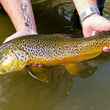






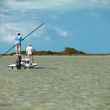



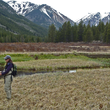





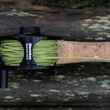



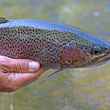


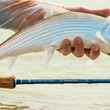
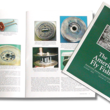

Comments